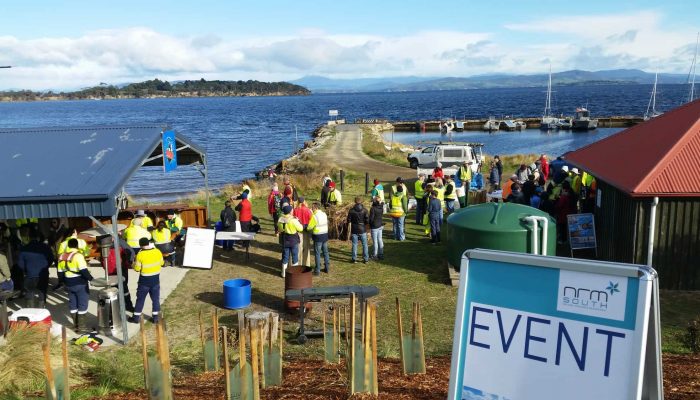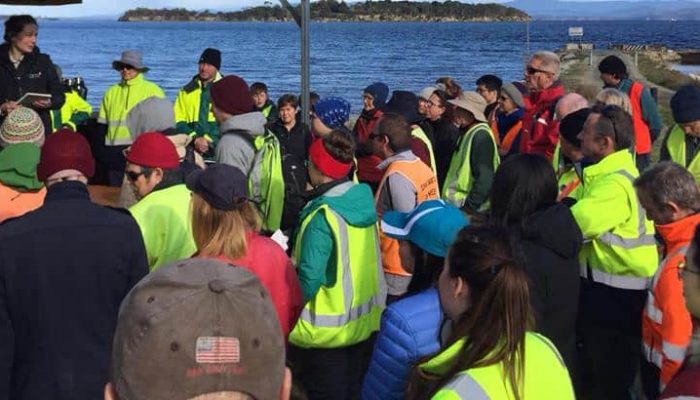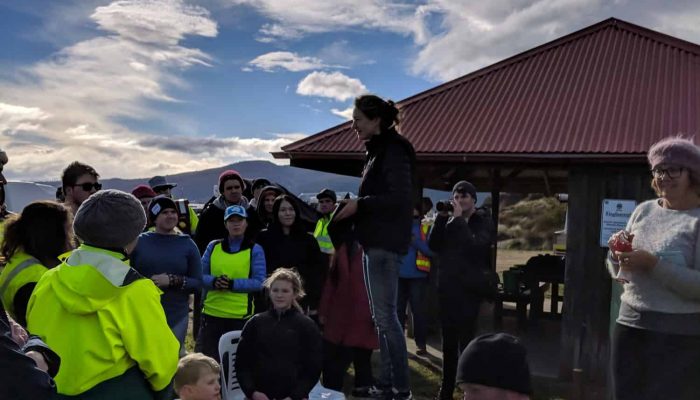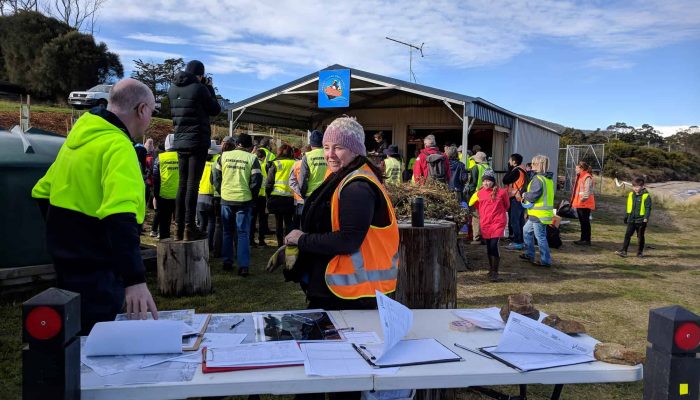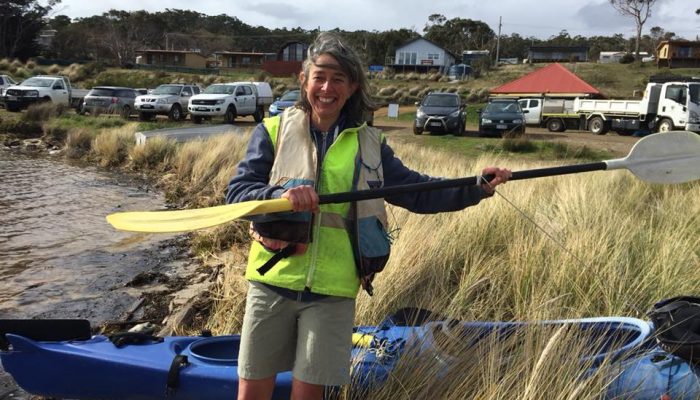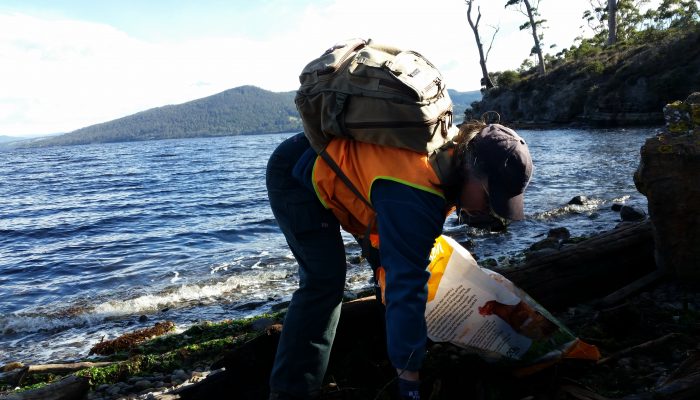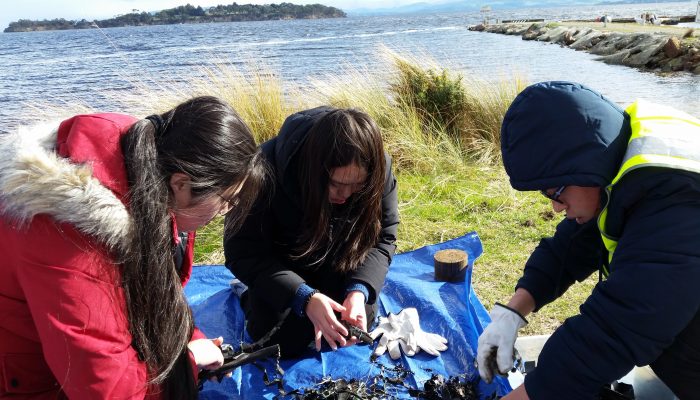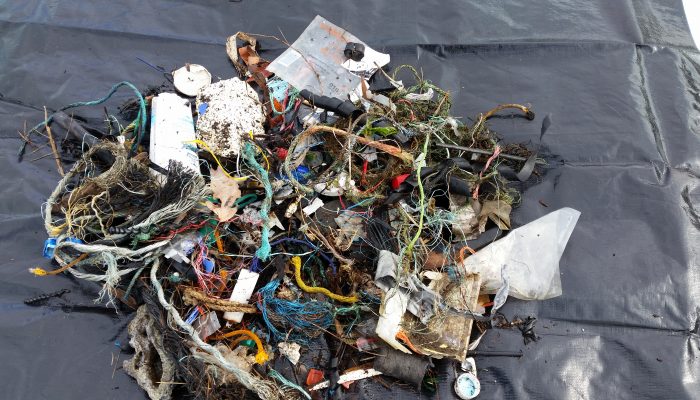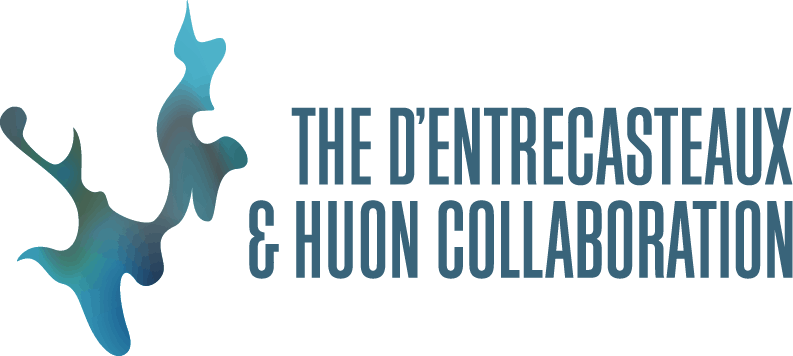The beaches and waterways of beautiful Bruny Island are notably cleaner thanks to the efforts of the 124 volunteers who joined a marine debris clean up event on 18 August, removing over 10 cubic metres of debris. Organised by the D’Entrecasteaux and Huon Collaboration (DHC), these annual clean-ups have removed over 55 cubic metres of marine debris from southern Tasmania’s waters since 2016.
Volunteers from a range of organisations, businesses, care groups and industry worked side by side in small teams; exploring the wild coastlines, learning about different types of litter, and counting and recording the debris found. Part of a National Science Week curriculum of events, it stirred the inner scientist of these passionate volunteers. Once the marine debris was recorded – the information was uploaded onto a national database. This information helps researchers work out where the debris is coming from, how it got there and comparing the types of marine rubbish found in urban areas versus those in remote locations. Their work relies on the data collected by citizen scientists and volunteers and helps inform policy and changes in practices. Where possible the debris collected was recycled – with some rope taken by local basket weavers.
The D’Entrecasteaux and Huon waterways are important places, pristine and home to species of handfish, seastars and algae found nowhere else on Earth. But even the remote and relatively unpopulated regions of Tasmania’s far south are not immune to the effects of marine debris. Every year over 8 million tonnes of plastic debris enters the ocean. Debris ends up in the waterways where it can be ingested by fish, entangle mammals and birds, and leach compounds into our local marine environment. Earlier this year, volunteers collected more than 3,000 individual items of marine debris on the beaches around Charlotte Cove alone.
“To keep our waterways clean we must use less plastic, consider what we buy (reduce excess packaging) and recycle.” Dr. Amelia Fowles, NRM South’s D’Entrecasteaux and Huon Project Officer suggested. “The majority of the debris we’re seeing in our waterways and on our beaches is from land-based sources, so it really comes down to us as individuals managing what we buy and throw away. We can switch to multiuse items such as fabric bags, BYO coffee cups and bottles, reuse plastic items and try to find alternatives to landfill and let’s make it a habitat to collect debris when we see it.”
The DHC would like to thank all the volunteers who turned up on the day – which included representatives from the Tasmanian Seafood Industry Council, pakana services, Friends of Randall’s Bay Coastcare Group, Conservation Volunteers Australia, Kingborough Coastcare, Hobart City Council, State Government, Basketmakers of Tasmania, the Huon Valley Roamers Landcare Group, Tasmania’s Parks and Wildlife Service, Institute for Marine and Antarctic Studies, and Bruny Island Boat Club.
The DHC marine debris clean-ups showcase the effectiveness of working together and remind us to reduce our impact on these areas.To find out more about future clean up events, sign up to the DHC newsletter.
